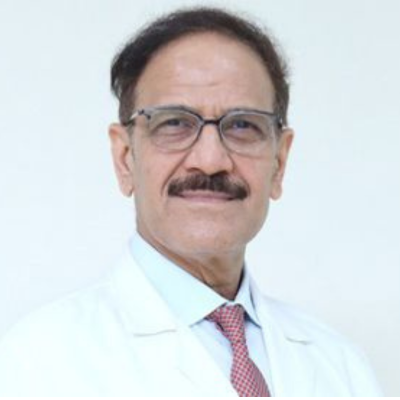Medical Visa Extension in India: How to Apply and What You Need to Know
 27 March,2025
Read More
27 March,2025
Read More
Enquire now in case of any assistance needed
Starting From: USD 3308 - USD 3608
Biventricular Pacemaker is affordable in India. The cost of Biventricular Pacemaker in India lies between USD 3308 - USD 3608. The exact procedure price depends on multiple factors such as the surgeon's experience, type of hospital, severity of the condition, patient's general condition,�etc.
A biventricular pacemaker, also known as a cardiac resynchronization therapy (CRT) device, is a sophisticated medical implant designed to address heart rhythm abnormalities, specifically in cases of heart failure. Unlike traditional pacemakers that focus on single-chamber pacing, a biventricular pacemaker is adept at synchronizing the contractions of both the left and right ventricles, allowing for improved cardiac function and enhanced quality of life for individuals with heart failure.
Heart failure is a condition characterized by the heart's inability to pump blood efficiently, leading to symptoms like fatigue, shortness of breath, and fluid retention. In some cases, heart failure is accompanied by a phenomenon known as ventricular dyssynchrony. This refers to a lack of coordination between the contractions of the heart's chambers, particularly the left and right ventricles. Dyssynchrony exacerbates heart failure symptoms and can lead to further deterioration of cardiac function.
Biventricular pacemakers are indicated for individuals who meet specific criteria, including:
Biventricular pacemakers work by sending precisely timed electrical impulses to the heart's chambers, effectively synchronizing their contractions. This is achieved through the following components and functions:
The implantation of a biventricular pacemaker involves several key steps:
A biventricular pacemaker represents a significant advancement in the management of heart failure, particularly in cases of ventricular dyssynchrony. By coordinating the contractions of the heart's chambers, this sophisticated device offers tangible benefits in terms of improved cardiac function, symptom relief, and enhanced quality of life for individuals facing heart failure. Through careful patient selection, expert implantation, and diligent follow-up care, biventricular pacemakers stand as a vital tool in the quest to optimize cardiovascular health and well-being.
Chairman
Interventional Cardiologist
BLK-Max Super Speciality Hospital, New Delhi
Book AppointmentChairman
Cardiothoracic and Vascular Surgeon
Medanta - The Medicity Hospital, Gurgaon
Book AppointmentConsultant
Interventional Cardiologist
Apollo Hospitals, Greams Road, Chennai
Book AppointmentChairman
Interventional Cardiologist
Fortis Escorts Heart Institute, Okhla, New Delhi
Book AppointmentChairman
Cardiothoracic and Vascular Surgeon
Manipal Hospital, Dwarka, Delhi
Book AppointmentChairman
Interventional Cardiologist
BLK-Max Super Speciality Hospital, New Delhi
Book AppointmentChairman
Cardiothoracic and Vascular Surgeon
Medanta - The Medicity Hospital, Gurgaon
Book AppointmentConsultant
Interventional Cardiologist
Apollo Hospitals, Greams Road, Chennai
Book AppointmentChairman
Interventional Cardiologist
Fortis Escorts Heart Institute, Okhla, New Delhi
Book AppointmentChairman
Cardiothoracic and Vascular Surgeon
Manipal Hospital, Dwarka, Delhi
Book AppointmentChairman
Interventional Cardiologist
BLK-Max Super Speciality Hospital, New Delhi
Book AppointmentDoctor of Pharmacy
Dr. Deepanshu Siwach is a skilled clinical pharmacist with a Doctor of Pharmacy degree.?He has 4+?years of experience and has worked with thousands of patients. He has been associated with some of the top hospitals, such as Artemis Gurgaon.
Dr. Deepanshu Siwach is a skilled clinical pharmacist with a Doctor of Pharmacy degree.?He has 4+?years of experience and has worked with thousands of patients. He has been associated with some of the top hospitals, such as Artemis Gurgaon....
Dr. Aseem Ranjan Srivastava is an experienced Pediatric Cardiothoracic Surgeon specializing in Minimal Access and Robotic Cardiac Surgery. He strongly recommends prompt corrective repair when possible....
The Art of Effective Communication
 27 March,2025
Read More
27 March,2025
Read More
 26 March,2025
Read More
26 March,2025
Read More
 22 March,2025
Read More
22 March,2025
Read More
 12 March,2025
Read More
12 March,2025
Read More
 24 January,2025
Read More
24 January,2025
Read More
 20 January,2025
Read More
20 January,2025
Read More




